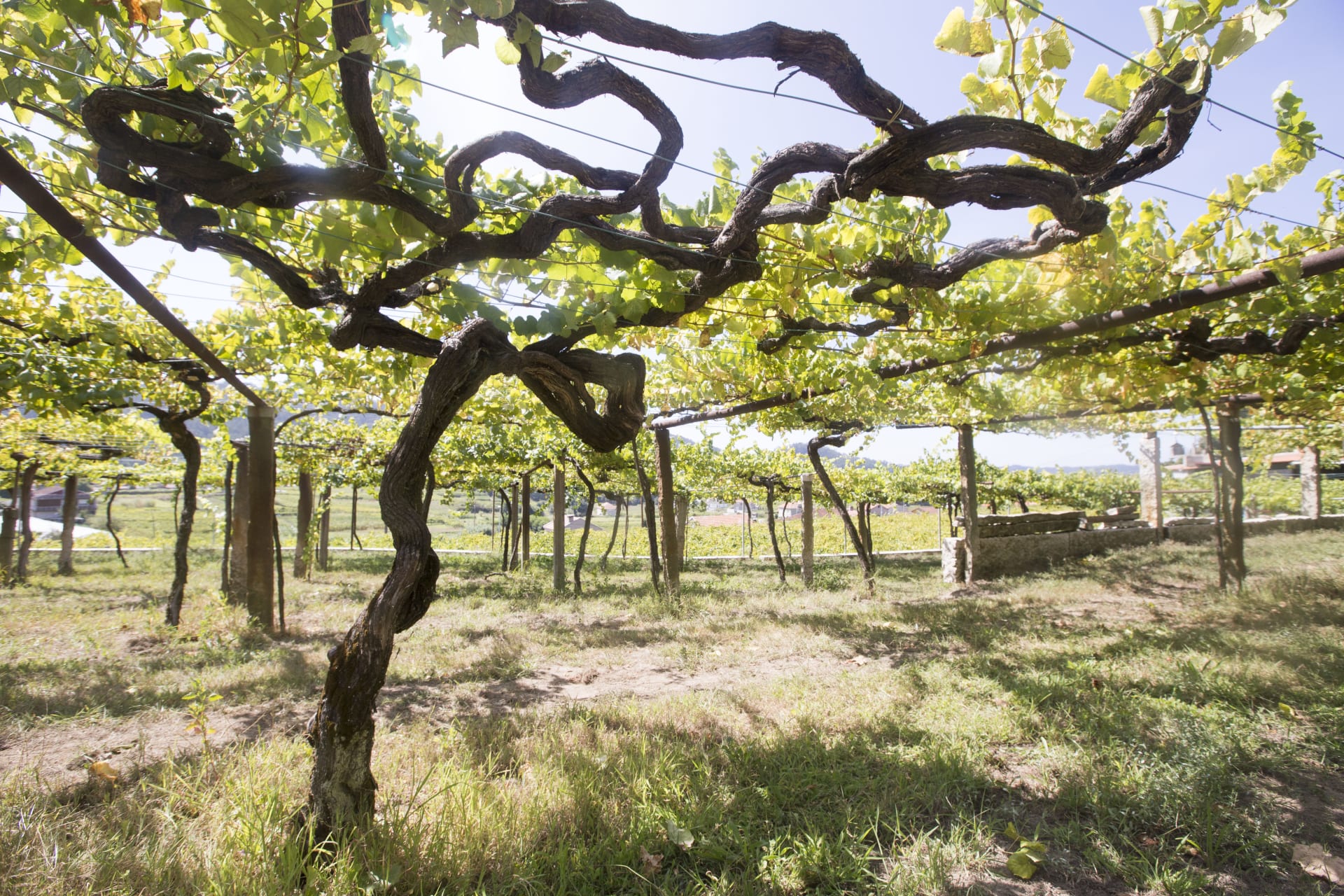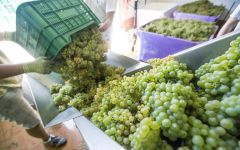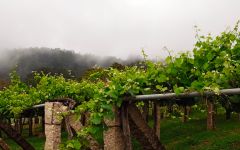Do Ferreiro Cepas Vellas Albarino 2018
-
Robert
Parker -
Wine &
Spirits



Product Details
Your Rating
Somm Note
Winemaker Notes
Professional Ratings
-
Robert Parker's Wine Advocate
The 2018 Albariño Cepas Vellas has to be one of the finest vintages of this old-vine (reaaaaally old vine!) cuvée, in a vintage where the wine reached levels of elegance and harmony that I don't remember before. After having the wine in the glass for almost two hours, the nose was explosive, and the palate felt like bottled electricity, with effervescent acidity that makes you salivate, and it had incredible depth and concentration. They now tell me they think the vines could have been planted in 1785, in a property that had been a granite quarry, so I don't need to tell you what the soils are like here. This is a zone with a lot of fog, and that brings intense salinity to the wines. I need to dig out some bottles of 2010 I have somewhere in my cellar and check the evolution, because they tell me, and I agree, that this is a modern version of the 2010. There are 8,000 bottles of this wine. It was bottled in September 2019.
-
Wine & Spirits
Gerardo Mendez grows this fruit at a parcel of ancient pergola-trained vines directly in front of his winery in Meaño. He believes them to be more than 245 years old. They produce a concentrated albariño, taken through a five-hour cold soak, a fermentation started by a pied de cuve from the grapes, then 11 months on the lees in stainless-steel tanks. The broad, bitter leesiness is what comes first, the wine’s youthful power showing in the intense, oceanic flavors of a barnacle, the depth and richness structured by racy acidity. Put the bottle aside for a day, and then another, and the wine keeps getting better, its freshness expanding in waves of pale, savory fruit.
Other Vintages
2021-
Robert
Parker
-
Robert
Parker
-
Robert
Parker -
Wine &
Spirits
-
Robert
Parker -
Wine &
Spirits









Do Ferreiro is a small family winery in the historic heart of Spain’s coastal Rías Baixas region. Highly regarded for crafting albariño, the winery has become a reference point for the grape. They farm over 175 tiny plots of albariño by hand, located in the Salnès subzone of Rías Baixas. This valley’s proximity to the ocean, ideal climate due to the natural protection by mountain ranges, and decomposed granitic soil have gained the reputation for being the ideal zone in Rías Baixas for growing profound albariño. The blend of these plots is what makes up Do Ferreiro Albariño.
Gerardo Méndez was part of the original group of 14 growers who elevated the region’s potential, as he and his father Francisco were integral in forming the original denomination of origin Rías Baixas in 1988. Gerardo has become known for his outsized contribution to the region as a leader in quality winemaking and for his incredible generosity and amazing hospitality. In addition to his work in creating the denomination, Gerardo also began recovering old vineyards, introducing organic farming, and restoring traditional trellising methods. Gerardo is known for his absolute faith in the local emparrado system (pergola training), which he has adapted and refined over the years to allow more sun into the canopy, allowing for even ripeness and naturally lower yields. He lets his chickens roam through the vineyards the way his ancestors had done in the past, providing both natural pest control and contributing valuable nitrogen to the soil. Grapes are harvested by hand with great scrutiny, sorting happens in the vineyard, bunch-by-bunch, as opposed to ever using a sorting table. Such is the dedication to quality that the farming and daily tending to vineyards is where the time and investment is spent. The winemaking is straightforward with no makeup.
Most of Gerardo’s neighbors in that era didn’t understand why someone would work so hard, risking their harvest by using indigenous yeasts and waiting to harvest until the grapes were perfectly ripe. Initially, they thought he was crazy, but as the wine started to achieve fame outside of the region, people realized that he had been a visionary all along. Aspiring growers began to seek his advice in both farming and winemaking. Do Ferreiro was born from incredible raw material and an uncompromising dedication to quality, a legacy that continues today with his son, Manuel, and daughter, Encarna, all working together to craft Do Ferreiro.
Today, Manuel and Encarna contribute to the same spirit of uncompromising quality to the family business as they also push the exploration of Rías Baixas into new, uncharted territory. Manuel, who took over as lead-winemaker from his father with the 2015 vintage, is busy isolating plots and exploring how different soils, elevations, and exposures can affect these transparent wines. He is farming single vineyards, which demonstrate that the site is multidimensional here in the same way that it is in all great wine growing regions of the world.

Bright and aromatic with distinctive floral and fruity characteristics, Albariño has enjoyed a surge in popularity and an increase in plantings over the last couple of decades. Thick skins allow it to withstand the humid conditions of its homeland, Rías Baixas, Spain, free of malady, and produce a weighty but fresh white. Somm Secret—Albariño claims dual citizenship in Spain and Portugal. Under the name Alvarinho, it thrives in Portugal’s northwestern Vinho Verde region, which predictably, borders part of Spain’s Rías Baixas.

Named after the rías, or estuarine inlets, that flow as far as 20 miles inland, Rías Baixas is an Atlantic coastal region with a cool and wet maritime climate. The entire region claims soil based on granite bedrock, but the inlets create five subregions of slightly different growing environments for its prized white grape, Albariño.
Val do Salnés on the west coast is said to be the birthplace of Albariño; it is the coolest and wettest of all of the regions. Having been named as the original subregion, today it has the most area under vine and largest number of wineries.
Ribeira do Ulla in the north and inland along the Ulla River is the newest to be included. It is actually the birthplace of the Padrón pepper!
Soutomaior is the smallest region and is tucked up in the hills at the end of the inlet called Ria de Vigo. Its soils are light and sandy over granite.
O Rosal and Condado do Tea are the farthest south in Rías Baixas and their vineyards actually cover the northern slopes of the Miño River, facing the Vinho Verde region in Portugal on its southern bank.
Albariño gives this region its fame and covers 90% of the area under vine. Caiño blanco, Treixadura and Loureira as well as occasionally Torrontés and Godello are permitted in small amounts in blends with Albariño. Red grapes are not very popular but Mencía, Espadeiro and Caiño Tinto are permitted and grown.
